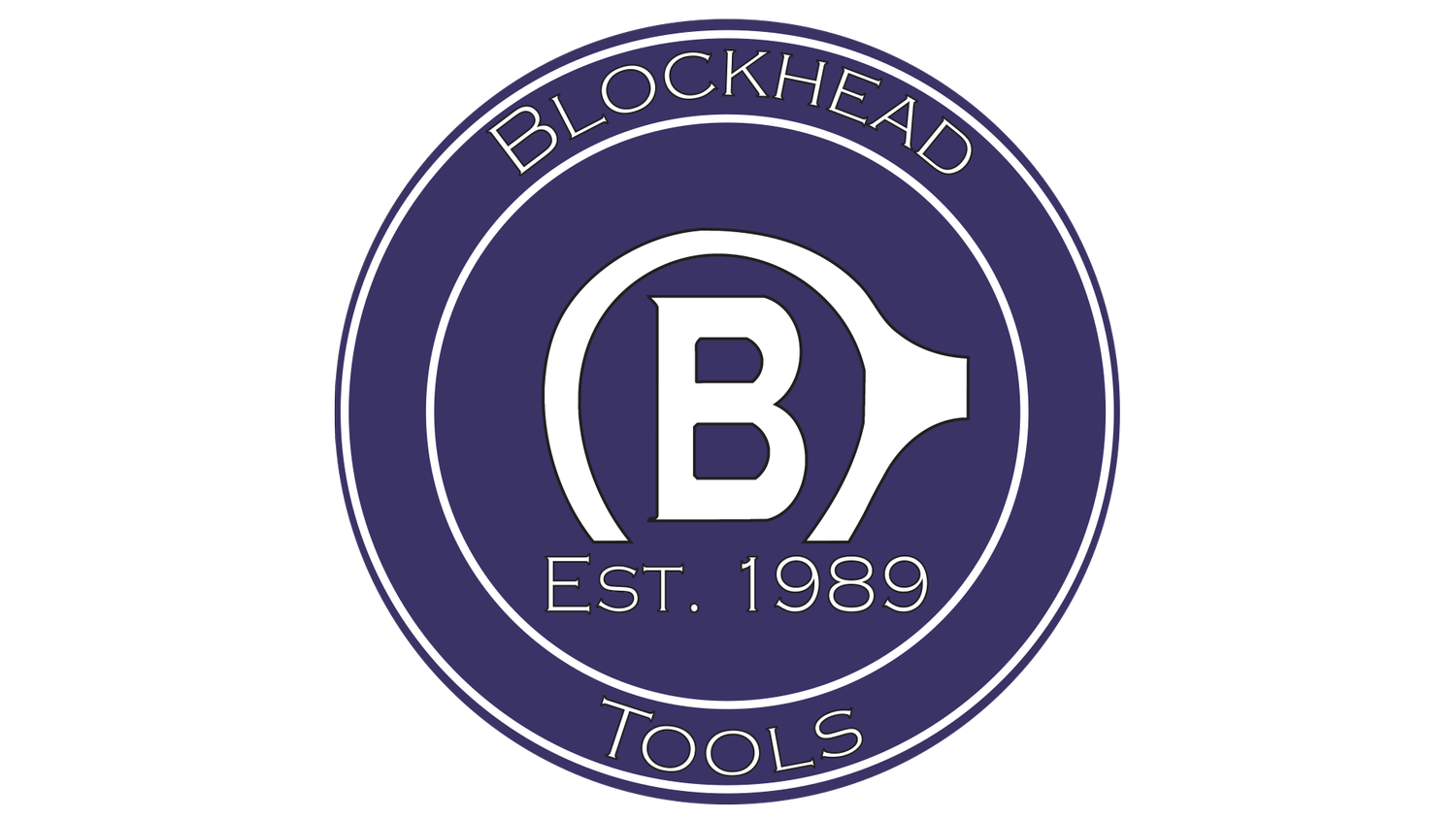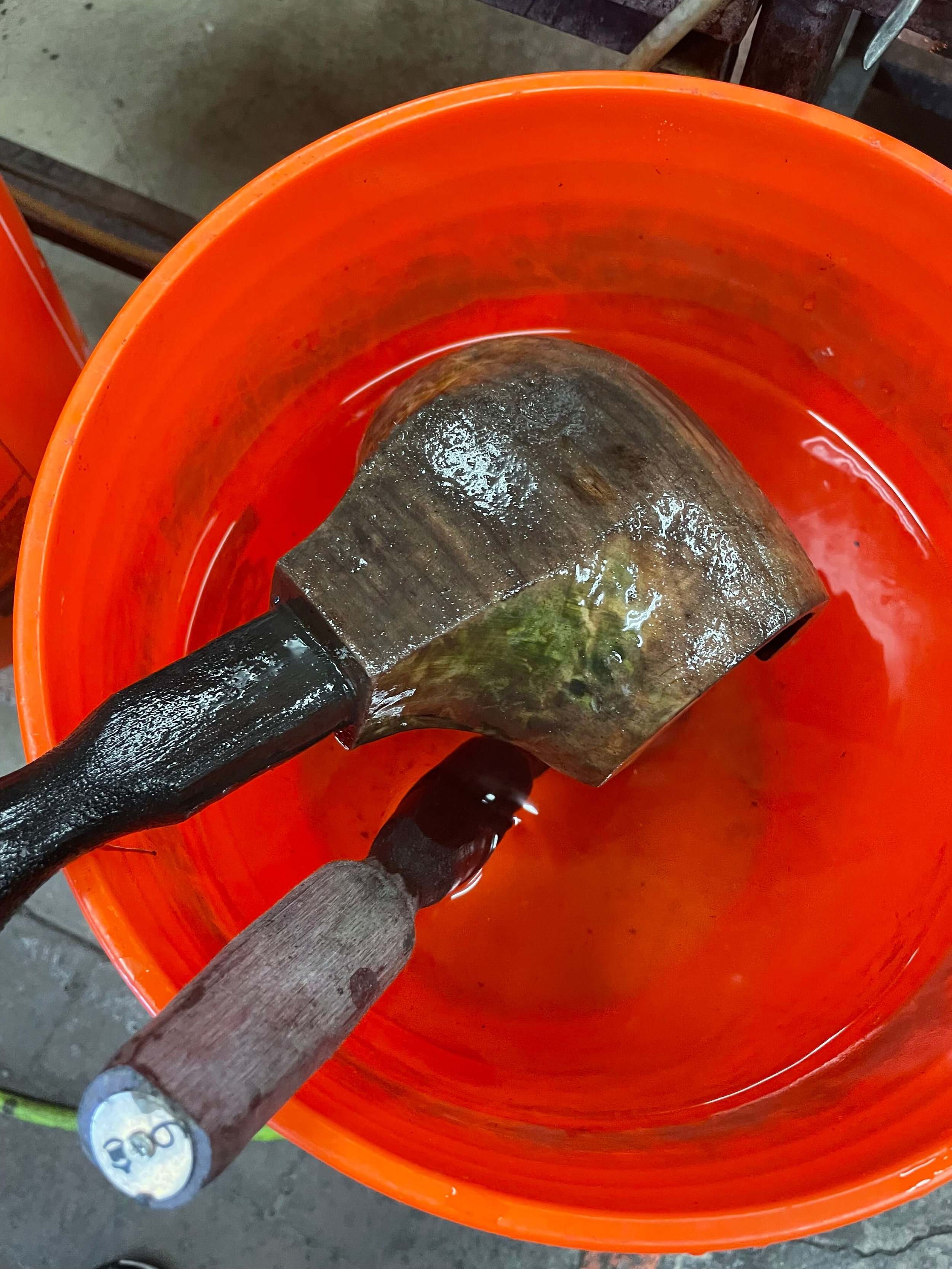
Questions, Answers, and Ruminations
The FAQ Page
Care & Feeding of Your Wood Tools
Soak it. Always.
Wood blocks and molds need to be submerged in water for as much of the time as possible. A quarter cup of household bleach per 5 gallons of water will help to keep them free of mold. You may need to give your wood tools an occasional cleaning with a green scrubby pad.
Burn it. Generally.
The way wood blocks and molds work is that when the hot glass touches the wet wood, it causes a steam cushion to form. Burn your blocks and molds in with a couple of clear gathers to build up the charred carbon layer and to get it smoothed in. Dip your wood tools in water frequently.
What Tools Are Made Of
Locally Sourced Wood
Blockhead Tools molds and block heads are crafted from native Pacific Northwest Bigleaf Maple. The density of Acer macrophyllum hardwood carves smoothly on our CNC router and soaks up just the right amount of moisture to create the perfect steam cushion to evenly cradle molten glass for hundreds of uses. Stormo Hardwoods in Arlington, Washington salvages or reclaims these tough giant trees from urban sources and saves this valuable wood resource from becoming merely fodder for the wood chipper. We love stocking up out truck with pallets of maple at Stormo’s nearby location. He has the best and biggest tools!
Handles of Durability
Blockhead Tools carves our block and mold handles from Purpleheart hardwood. Also called amaranth, roxinho, and violeta, we chose Peltogyne because it is a superhero of timber durability. The distinctive purple-colored fibers are both rot and insect resistant. Most importantly, purpleheart handles stay strong through as many dunks as the maple pieces they hold.
Bit About Metal Bits
Our profound esteem for the accessories that hold it all together: hinges, tags, bolts, screws, lifting handles, washers, wingnuts, and jack lines. These mighty and integral small heroes cannot rust, warp, or disintegrate spending endless weeks (or months) in buckets of slimy bleach water. Blockhead Tools only uses 18-8 Stainless Steel, which contains chromium to help prevent rust and corrosion in addition to nickel for durability.
Graphite Really Matters
Graphite has unsurpassed durability and limitless potential for tiny details. It can handle extremely high temperatures and is corrosion-resistant. Blockhead Tools sources the graphite we carve for molds from Indiana USA. Our vendor also supplies manufacturers in aerospace, energy, mining, and semiconductor industries.
Bare graphite produces glass pieces with a spectacular “chill mark” texture. Smooth glass pieces require corking; cork included with your order. Download corking instructions here.
Graphite is a premium material with a premium cost. Producing graphite tools takes a lot of time and is very very messy. Quotes for graphite tools reflect these variables.
Brilliant shell design in graphite for Eric Dandurand of Harmony Glassworks
Still have questions?
Blockhead Tools’ Customer Care Team wants to hear about it. Fill out our contact form and we will get right back to you with answers!
“I must really be a blockhead to do this.”
Why Make Blocks?
Seeing a need for blocks readily available to glassblowers in the Pacific Northwest, Rob Jones established Blockhead Tools in 1989. The first Blockhead workshop was a barn on the Olympic Peninsula in Washington. It was cold. The glassblowers were a ferry ride away. Rob moved the wood shop to the Fremont neighborhood of Seattle in 1997 to work on his own glassblowing career while carving tools.
-Rob Jones
I Met a Guy in a Bar
Glassblower meets woodworker. “I’m a glassblower making wood tools. You’re a woodworker; want to buy my business?” said Rob Jones. And so it came to pass that Greg Allen brought his experience building musical instruments and rebuilding 17th century historic barns to the field of making tools for glassblowing artists.
Reinventing the Wheel
Carving blocks using a mallet and gouge could not keep up with the growing demand for blocks. Greg enlisted the help of technology and added a CNC router to his own collection of tools. The carving paths come from a CAD program that tells this precision mighty machine exactly what to do. Innovation expanded possibilities. Blockhead now uses three CNCs to carve molds, footing tools, paddles, and more to come!











